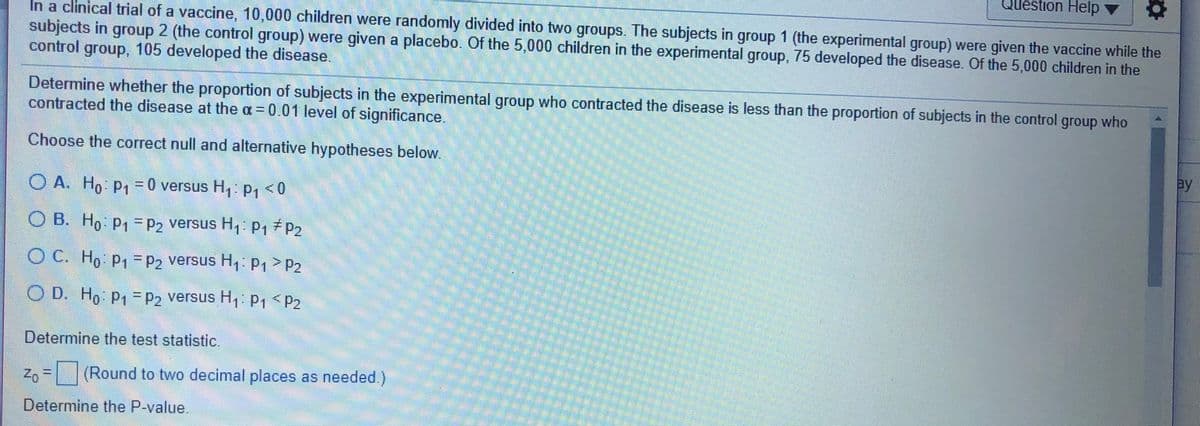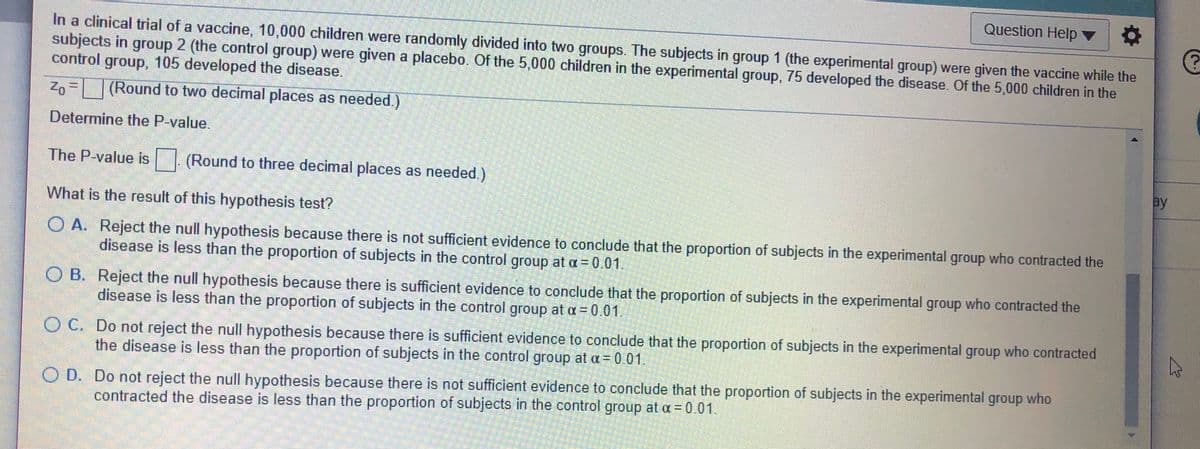Question Help y In a clinical trial of a vaccine, 10,000 children were randomly divided into two groups. The subjects in group 1 (the experimental group) were given the vaccine while the subjects in group 2 (the control group) were given a placebo. Of the 5,000 children in the experimental group, 75 developed the disease. Of the 5,000 children in the control group, 105 developed the disease. Determine whether the proportion of subjects in the experimental group who contracted the disease is less than the proportion of subjects in the control group who contracted the disease at the a= 0.01 level of significance. Choose the correct null and alternative hypotheses below. O A. Ho: P1 = 0 versus H,: P1 <0 O B. Ho P1 =P2 versus H,: p1 #P2 O C. Ho P1 =P2 versus H,: p1 > P2 O D. Ho: P1 =P2 versus H,: p1
Correlation
Correlation defines a relationship between two independent variables. It tells the degree to which variables move in relation to each other. When two sets of data are related to each other, there is a correlation between them.
Linear Correlation
A correlation is used to determine the relationships between numerical and categorical variables. In other words, it is an indicator of how things are connected to one another. The correlation analysis is the study of how variables are related.
Regression Analysis
Regression analysis is a statistical method in which it estimates the relationship between a dependent variable and one or more independent variable. In simple terms dependent variable is called as outcome variable and independent variable is called as predictors. Regression analysis is one of the methods to find the trends in data. The independent variable used in Regression analysis is named Predictor variable. It offers data of an associated dependent variable regarding a particular outcome.
10/12


Trending now
This is a popular solution!
Step by step
Solved in 2 steps


